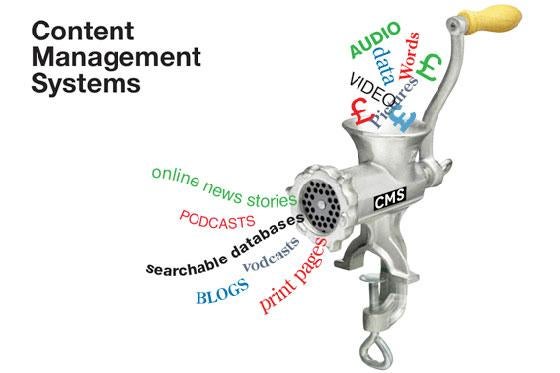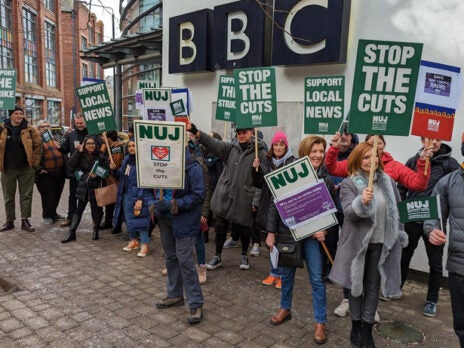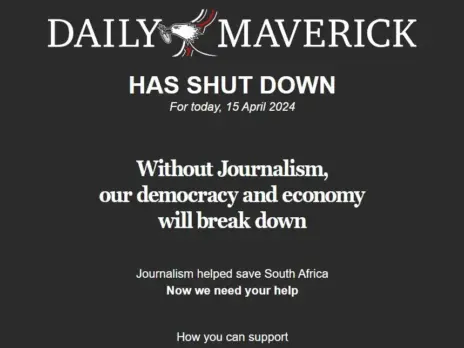
The technology that sends stories between journalists and sub editors – known in the jargon as a content management system – used to be a fairly inconsequential part of a newsroom’s make-up.
Today, the interface between reporters, sub-editors, websites, news pages and mobile devices is so important that even in the current hellish downturn it is one of the few things that journalism organisations are spending serious money on.
Business publisher Centaur has just spent £1m on its new CMS provided by Abacus E-Media, Trinity Mirror has just spent £7.5m on its Midlands newsroom complete with new CMS technology (albeit with the associated cut of 65 jobs). This technology is seen as so important that some news organisations claim it means journalists can be done away with.
Express Newspapers says that its Woodwing content editing system means more than 80 production journalists’ jobs can be axed, because it enables reporters to write directly on to the print and web page. And at Trinity Mirror, the claimed efficiencies provided by its new ContentWatch CMS technology have been used to help justify journalism jobs going at Media Wales and Trinity Mirror Midlands.
Many would argue that no technology yet known can replace the people who write stories, check for errors and legals and produce compelling headlines and layouts. And many journalists complain that new technology often makes life more complicated, not less so. But it is undoubtedly true that fewer journalists are now expected to produce more and more words, pictures, audio and video content for print, web and mobile platforms.
For this to work, serious information technology is needed.
The term content management system can also describe the frame that the design of your website sits on – meaning that having a good one can also mean having a website which is search-engine optimised, can be updated and changed easily, and which has all the new technical bells and whistles you need to stay up to date.
Integrated print/web solution is the holy grail
The holy grail of the CMS producers has been creating a onesize-fits-all solution; something which seamlessly integrates the reporters producing the content, the production journalists, and the website and print production software and hardware.
One system which seems to have come close to integrating print and web production is Methode, produced by Eidos. Financial Times‘ online editor James Montgomery said this system has been working well for them.
It allows sub-editors to take the same words and pictures and simply ‘toggle’between print and web pages.
‘If everyone is working on the same system its easier to work together,’says Montgomery. ‘If you have different CMS’s for print and online it’s a fundamental separation in the newsroom and that’s hard to overcome.”
RBI favours seperate technology for print and web
Reed Business Information has been particularly successful at taking its portfolio of B2B magazines online – winning awards and making significant revenue.
Editorial director Karl Schneider believes that there is no one piece of software which will integrate all editorial production.
‘We have had a number of systems over the years,’he says.
‘The big issue over the past few years has been putting in place a CMS that works in print and on the web. What we found hard to understand was the CMS providers don’t seem to be geared up for this at all – we’ve not seen anything we’d be really comfortable buying.”
He adds: ‘Even if you could find something, how do you know it will still meet all your needs in a year’s time? The idea that this one system will have the best features in every new area that comes along is so unlikely.”
Schneider says that one of the most important things about the technology used at RBI is that it gives them flexibility. ‘Five years ago blogging came out of the blue, now it’s a critical part of what we do – we don’t know what is coming down the line.”
Anyone investing in new web technology should make sure that it is compliant with industry standards so that new features, or ‘plug-ins”, created by othersoftware providers can be added with ease, he suggests.
RBI has decided not to go for the complete CMS package that some companies provide, but instead uses different software for different parts of the production process.
It uses software called Episerver, produced by a Swedish company, for building web pages.
The key benefit of Episerver is that journalists can dramatically change the look of web pages without having to call on the services of a developer.
Schneider says: ‘It’s like getting Indesign for your website.’Journalists write their stories using In-Copy, an authoring system developed for magazines.
Free blogging tools are quite powerful
One senior CMS developer also told Press Gazette that the idea of finding one integrated print and online publishing solution was a red herring. ‘The efficiency of any technological publishing solution is dependant on the amount you are willing to use templates.
‘The CMS companies can provide this – but editors are generally unwilling to make too much use of templates on newspaper and magazine pages because they want to have the creative freedom to display stories as they see fit, so this is where the idea of having a fully integrated system breaks down,’he says.
Guardian News and Media, like many publishers, could not find an off-the-shelf system it liked, so developed its own CMS. This route doesn’t have to be prohibitively expensive – independently-owned newspaper the Newbury Weekly News also developed its own CMS solution for its award winning website.
Big proprietary CMS systems can cost anything from around £50,000 for a small publisher to around the £1m mark.
But according to head of editorial development for Guardian.co.uk Neil McIntosh, smaller magazine and newspaper publishers might not want to buy a system atall – but instead make use of free blogging software.
‘If you’re a small publisher you might want to ask whether you need to buy a CMS when there are quite powerful blogging tools out there,’he says.
‘Design-wise, they don’t have to look like a blog and they enable you to do lots of different things.”
What do you think? Share your experience of content management systems by using the comment box at the end of this story.
Email pged@pressgazette.co.uk to point out mistakes, provide story tips or send in a letter for publication on our "Letters Page" blog







